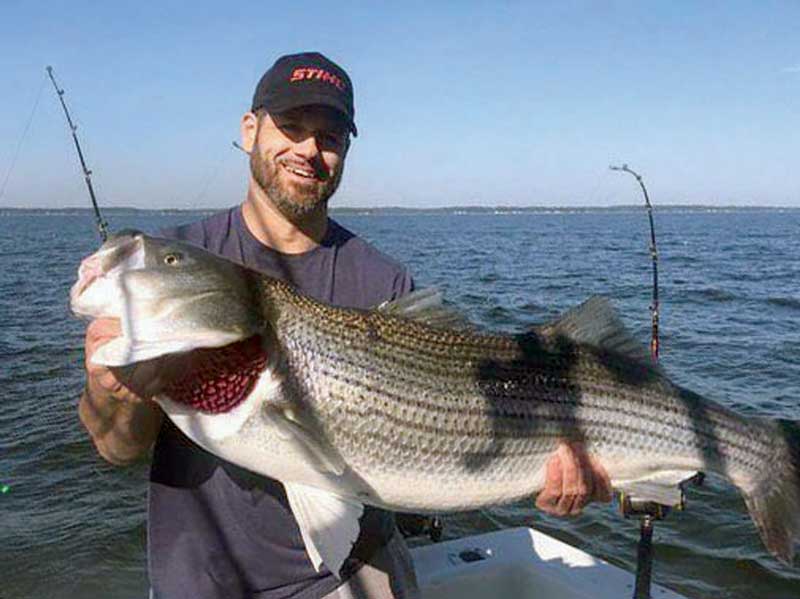Over the past eight weeks, at the request of surviving family members, a professional team of diverse and varied backgrounds worked together towards a common goal: to assist in the location of missing boater Ernie Sigmon, III, lost near Dares Beach, MD, on December 29, 2021.

Through a diversity and inclusion mindset, I established a high performance team comprised of government, industry, academia, side-scan sonar manufacturing experts, body recovery experts, professional divers, and technicians experienced in recovery efforts. Although the U.S. Coast Guard (USCG) traditionally performs search and rescue missions, the request to assist the family in need presented itself, and the Recreational Boating Safety (RBS) lessons learned detailed in this article could help to save others.
We obtained authorization from the Commanding Officer, Naval Research Laboratory, Chesapeake Beach Division, to access the NRL Restricted Area on two separate occasions. While utilizing an Autonomous Underwater Vehicle (AUV) to assist in locating possible targets for further assessment by Remotely Operated Vehicle (ROV) equipped with side scan sonar, we deployed two separate groups of professional divers to investigate potential sonar images, which met minimum characteristics of what we were looking for.
Due to the environmental challenges—water temperatures at 34 degrees, no visibility past 45 feet, inability of the divers to feel their fingers or read their air gauges at 65 feet—all happening in a high transit major shipping lane, my assessment was that it appeared too dangerous for human involvement/investigation at this most likely location. I monitored the diver’s time and kept them informed through a hydrophone.
It’s possible that an ROV or mini-sub with side-scan sonar may have produced a better result; however, the silt depth at the bottom was at least 12 inches, in addition to the strong current, which produced additional challenges. Due to the depth and water temperature, it would only allow 15 minutes dive time at the bottom. Under the circumstances, although we verified that doctors were standing by at the Baltimore Hyperbaric Chamber, I was not convinced it was worth endangering the divers to hypothermia or other potential medical situations, so we canceled the second dive of the day. We also provided GPS coordinates of these potential targets to Department of Natural Resources, Natural Resources Police (DNR/NRP) for further investigation and analysis, as this is still an open investigation.
Unfortunately, our efforts to date have not been successful in locating missing boater Ernie Sigmon, III, and at this point in time, collectively we have exhausted our efforts to bring closure to the family. We all continue, in addition to the 12.5k followers in this case, keeping a lookout on the beach fronts, on the water, and surrounding facilities for any signs. It is therefore the realization that without a Personal Flotation Device (PFD) being worn, while operating on the water in these temperatures, the chance for survival is significantly reduced, and the chance of succumbing to hyperthermia increases.
Additionally, the newly released VHF radios, which employ a Digital Selective Calling (DSC) plastic window covering the emergency DSC button, actually transmits the GPS location for emergency rescue, which would have yielded a better chance for survival in this scenario, especially from a passing ship.
I and the team, who have donated so much of our time, money, and effort, would much rather have tried and failed, than to sit idly by and have done nothing. If nothing else, this compounding experience over the past three months in recovery efforts for multiple victims has provided the additional credibility and value in taking the Maryland Boating Safety course, Cold Water Awareness and Survival Techniques course, or the Suddenly in Command course.
It is my personal and professional assessment that recent drownings have been primarily due to: (1) unawareness of the environmental dangers, (2) going out alone, (3) not dressed (dry suit) appropriately for the conditions, especially in water temperatures below 50 degrees, (4) not wearing a PFD, (5) not having an engine cut off switch, if applicable, (6) keeping the boat in gear and traveling at 2.5 knots, (7) not having a re-boarding ladder from below the waterline, and (8) not having a waterproof VHF DSC radio secured to their PFD, to call for help and ultimately rescue. Each one of these numbered issues is not a big deal, but cumulatively, it’s the beginning of the end for some.
I have been with many surviving families of the lost, and sometimes we are fortunate to find their loved ones. Other times, we are not. It is important to note that wearing your PFD is the only thing between you, the Devil, and the deep abyss.
Disclaimer: The views, expressions, and personal examples presented are those of the author and were obtained through personal and professional experience. This experience was obtained in a personal capacity, and while not on official USCG(A) orders.
By Steve Gershman
USCG(A), Flotilla 054-23-07 Herring Bay, Shady Side, MD